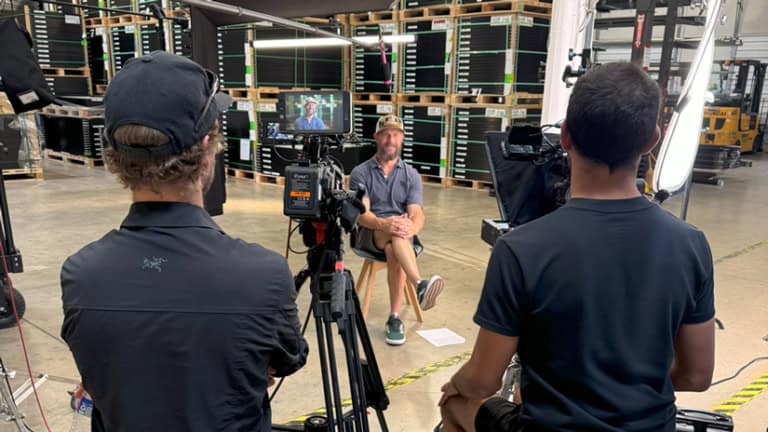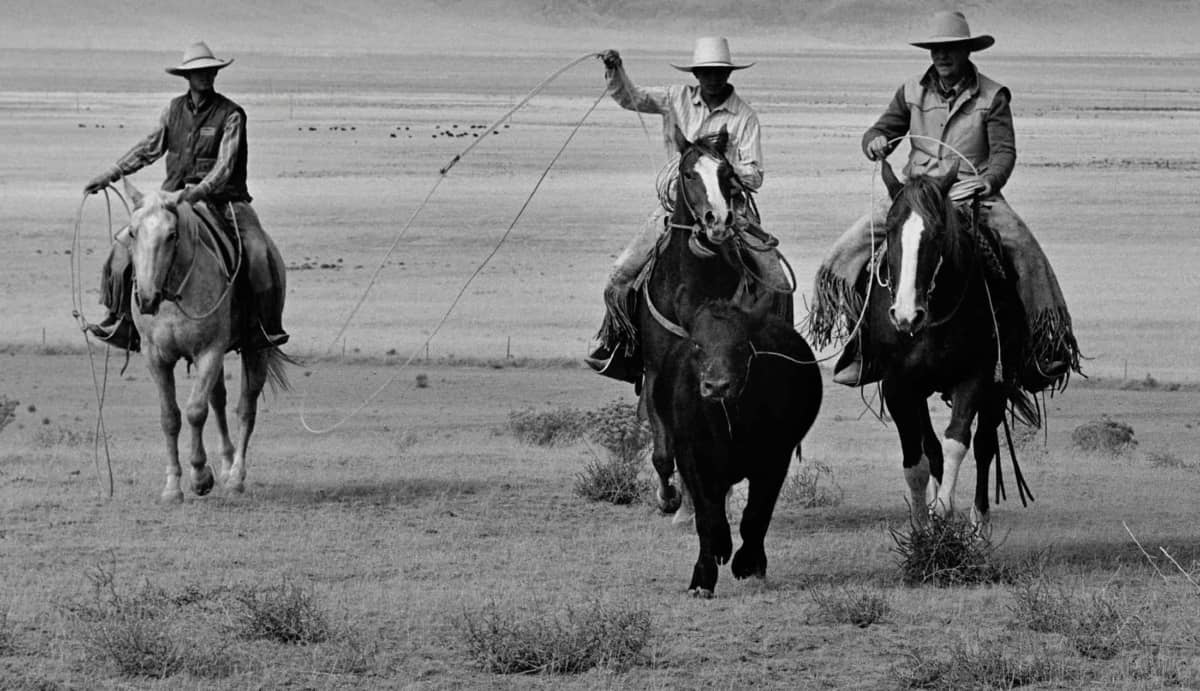
Choose your subject. Secure funding. Film the movie. Premiere the film. Sell the rights. Repay investors. Keep the change.
“That’s the dreambook story,” said John Langmore, “but it hasn’t been our story to date.” [restrict]
The Austin-based filmmaker, photographer, and attorney is the co-director and co-producer of COWBOYS – A Documentary Portrait, which is being released worldwide Nov. 17 across Amazon, iTunes, Vimeo On-Demand, and Google Play.
Langmore and his co-director/cinematographer, Bud Force, met in February 2017 at a shared office space in East Austin. Langmore had recently photographed a book, Open Range, which was the culmination of a four-year project photographing cowboys on 12 of the largest ranches in the U.S.
Force, who also has cattle ranch ties, pitched Langmore on producing a documentary on working cowboys. Soon after, they each put $5,000 in to start their production company, 1922 Films, and film a teaser.
Almost three years later, the world premiere was at the Austin Film Festival in October 2019.
A Cowboy Upbringing
Langmore grew up in Richardson, Texas, the son of Bank Langmore, who published his own book of cowboy photographs in 1975. At 12 years old, John began working summers at Las Vegas gambling icon Benny Binion’s ranch in Eastern Montana.
“My dad got me a job out there, and I fell in love with it,” John said. “So I cowboyed the next 12 summers.”
That stopped after John’s first year of law school, when he spent time working for a law firm in San Antonio. He made as much in one week as he did as a cowboy in the first half of the summer.
“I finally was like, ‘Aw shit, if I’m going to go to law school, I guess I probably ought to quit cowboying, become a lawyer,’” he said. “I took off in a totally different direction, pursued a professional life.”
Langmore rose up the ranks at Caterpillar Inc., before returning to Austin in 2003. He sparked his love of photography at a workshop in 2006, when he decided to photograph areas of East Austin before they became gentrified. That work is featured in his second book, Fault Lines.
It was John’s photography afterward – 25 years after he last spent time cowboying – that set the stage for the film.
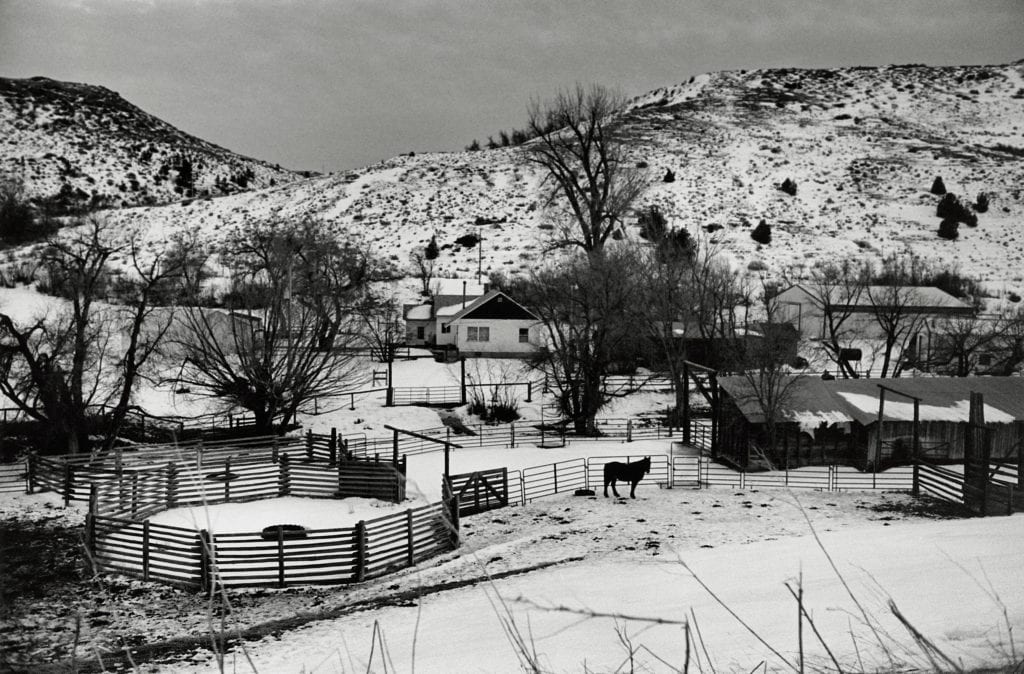
“It’s A Small Subset Of The Ranching World, And It’s Very Insular”
John’s relationships with ranchers in New Mexico, Texas, Montana, Wyoming, Arizona, and Northern Nevada opened doors to the filming and saved 18 months of work, he estimates.
Once 1922 Films published the teaser on Facebook, the video went viral.
“It got a couple of million views and attracted a woman that became our creative producer and helped put the film together,” John says.
Originally from Germany, Felicitas (Feli) Funke resides in Ketchum, Idaho, and joined 1922 Films as its third partner. Together, the three principals built a $350,000 budget for the film.
“Bud and I from the get-go said we wanted to make it as cinematic as a classic western, but we want it to be as authentic as that handful of documentaries cowboys did about themselves,” John said.
The result is a film that provides unfettered access to life on “big outfits,” as John calls them, which are ranches that range from 200,000 to 1.2 million acres. (For context, the state of Rhode Island is 988,864 acres.) These huge swaths of land are managed in part by 8-20 full-time cowboys who work cattle exclusively from the backs of horses.
“And there’s maybe 20-25 (of these big outfits) in the United States,” John said. “So it’s a small subset of the ranching world, and it’s very insular.”
The film is divided into the four seasons, and there are sub-stories in each season that give viewers a sense of everything from cowboys’ gear to how they deal with retirement. The key themes of the movie are isolation, love for the animals, and pride for doing work that others aren’t built for.
According to John, the movie would have read the same in 1970 as it will in 2070.
“That’s just the nature of it,” he said. “Other than the year and make of the pickup trucks, that’s about the only thing that ties (the film) to a point in time. It’s fascinating in that this is a world that exists in 2020, and 90 percent of the people (who watch it), one of the first things they say is, ‘I had no idea that world still existed.’”
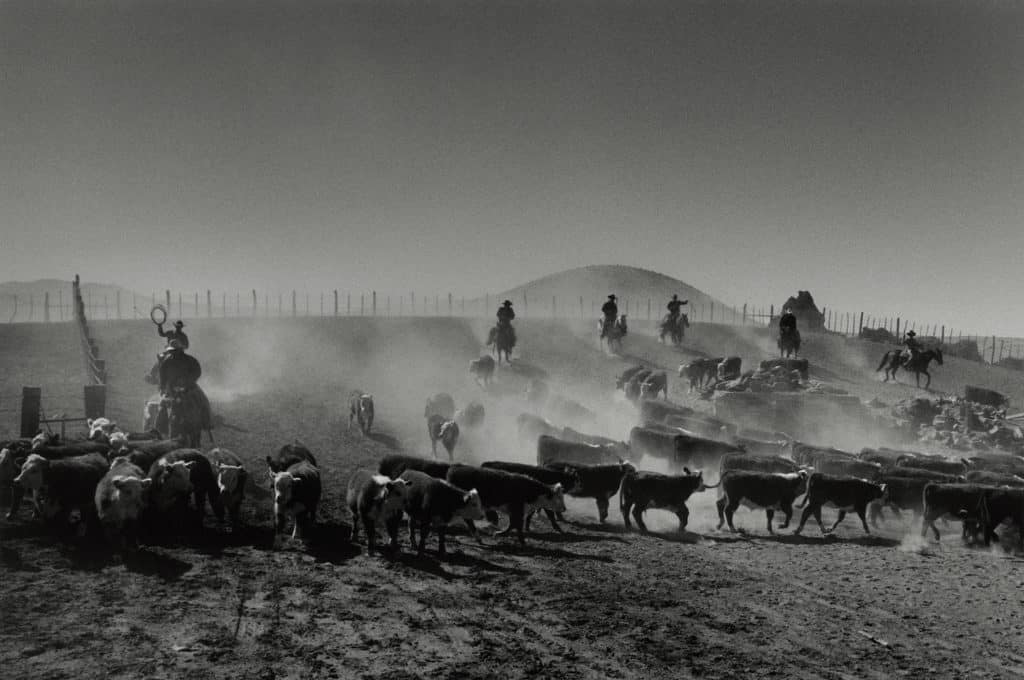
Revenue Shares, Licensing Agreements, And Distribution
The film debuted and then hit the film festival circuit. Meanwhile, John connected with a friend at William Morris Endeavor (WME), a major Hollywood talent agency that agreed to represent the film in North America as a “sales agent,” earning the standard 10 percent commission.
“For first-time filmmakers of a documentary to get represented by WME is a pretty big deal,” John said. “And I remember one of the first questions (WME) asked was, ‘What was your budget on the film?’ I think they’d run into a lot of people that ran up huge budgets to make a documentary film with little chance of earning it back.
“And when I said $500,000 (which included capital accounts), he’s like, ‘Oh, thank God, yeah okay, no problem.’ I thought, ‘Great, sounds like this will work – pay everybody back.’ Bud, Feli and I, we don’t get rich for the years’ of work, but you know, we’d get some return for all the effort.’”
In the six months that WME shopped the film to Discovery, Netflix, Hulu, Disney+, PBS and others, nobody made an offer. During that time, WME worked to attach a celebrity executive producer to draw interest. Actors like Kevin Costner, Matt Damon, Matthew McConnaughey, Sam Elliott, and Tommy Lee Jones were approached, but all passed for various reasons.
“We wanted it to be for the cowboys, and we were naive thinking, ‘Everybody loves cowboys, and a good western will sell itself,’” John said. “But I realized later what a difference it would have made for Kevin Costner or someone of his stature to be listed as an executive producer and do even a tiny bit of promoting associated with it.”
Eventually, 1922 Films regained the rights from WME and reconnected in late 2019 with ro*co Films, a smaller distributor of independent documentaries in the Bay Area. ro*co Films earns a 15 percent commission for securing distribution and screening rights. John recalls one deal they presented with a relatively new “all-rights” distributor in Ohio.
“They wanted rights to the film for 20 years – first it was 25 years, and then they backed off to 20,” John said. “We would have gotten 70 percent of anything they sold it for.
“They offered $50,000 up-front, and were going to allocate a $75,000 advertising budget to the film. They promised to actively promote Cowboys with hopes someone would buy it, or multiple folks would buy it.”
Ultimately, 1922 Films passed on that deal primarily because they didn’t want their film locked up for that long. With no up-front interest from subscription video on-demand (SVOD) platforms, they decided to go the transactional video on-demand (TVOD) route.
This means that 1922 Films will earn a percentage based on every sale of the film online starting tomorrow.
“I believe it’s 50 percent from Vimeo on-demand, which is far and away the highest,” John said. “I want to say it’s 70-30 for the others, give or take a little, although we’ve been told Amazon’s is the lowest (percentage).”
After deducting expenses and commissions from viewing revenue, 1922 Films hopes to repay investors. What remains will be split between John, Force, and Funke.
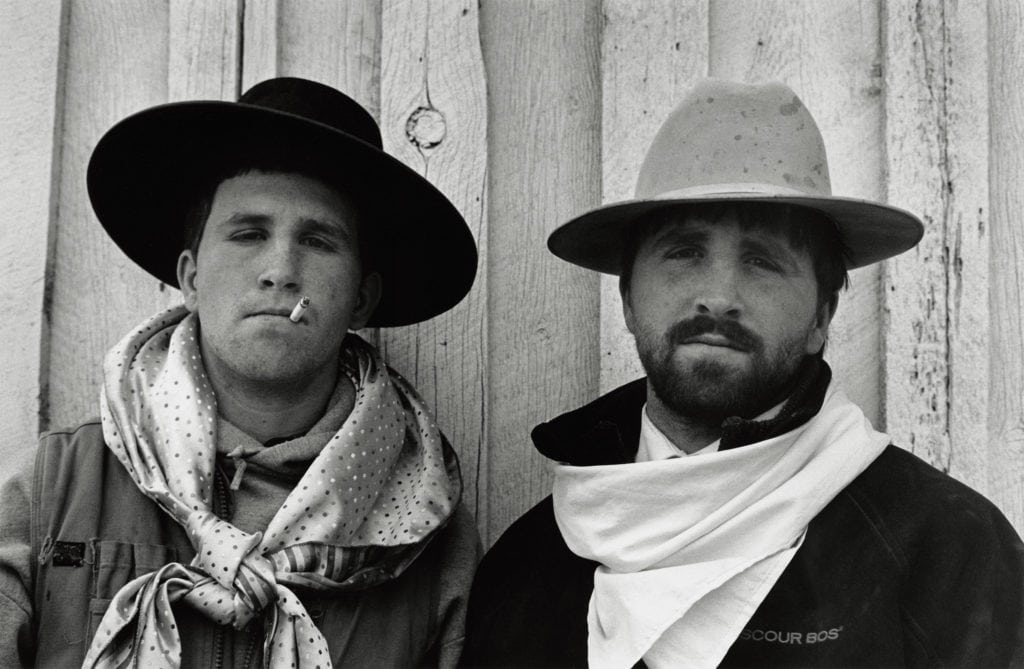
Advice For Other Filmmakers
1922 Films has earned some money for the film. SVOD platform Horse.tv licensed the rights, and a Swiss broadcaster paid for a 55-minute edited version that will be dubbed in German.
“I know a German dubbed version of cowboy vernacular is going to be crazy,” John said. “I can’t wait to watch that.”
With those funds, 1922 Films hired an L.A.-based PR firm, MPRM, to generate press leading into the TVOD release. The hope is that the film gains momentum, which helps spark future discussions with SVOD platforms that previously passed.
Meanwhile, ro*co continues to pursue the international market and is speaking to BBC and ARTE in France, among other international broadcasters.
Far from disillusioned, John feels emboldened by the audience response and is optimistic that the media will bolster the film’s reach and help resolve the disconnect John and the others see between the audience and the industry gatekeepers.
As he reflects on the entire process of filming the documentary and seeking distribution, he shared this advice for aspiring filmmakers.
- Have a passion for the subject matter: “It gets to be a grind over the course of making a film, so if it’s something that speaks to you, it will carry you through the low points.”
- Mind the administrative details: “You’re passionate about the making of the film and the subject matter when you start out. Don’t forget to dot your I’s and cross your T’s on legal documents. Treat it like a business venture.”
- Be patient with distribution: “A meaningful producer makes a big difference once you get to the part of the process where you’re distributing your film. So I would give myself more time for the distribution.”
- Be smart about film festivals: “Having a strategy for how you approach the film festivals matters for your film’s future success. Getting into a top-tier festival is in no way a guarantee for securing distribution as most films don’t get distribution, even if they have their world premiere at South By Southwest, or Toronto or Venice (film festivals). But you’re putting the odds in your favor if you premiere at a top-tier festival, and it gives you something to sell.”
- PR matters: “A good PR firm is worth its weight in gold.”
To learn more about “COWBOYS – A Documentary Portrait,” visit the film’s website, or follow the film on Facebook or Instagram. [/restrict]


